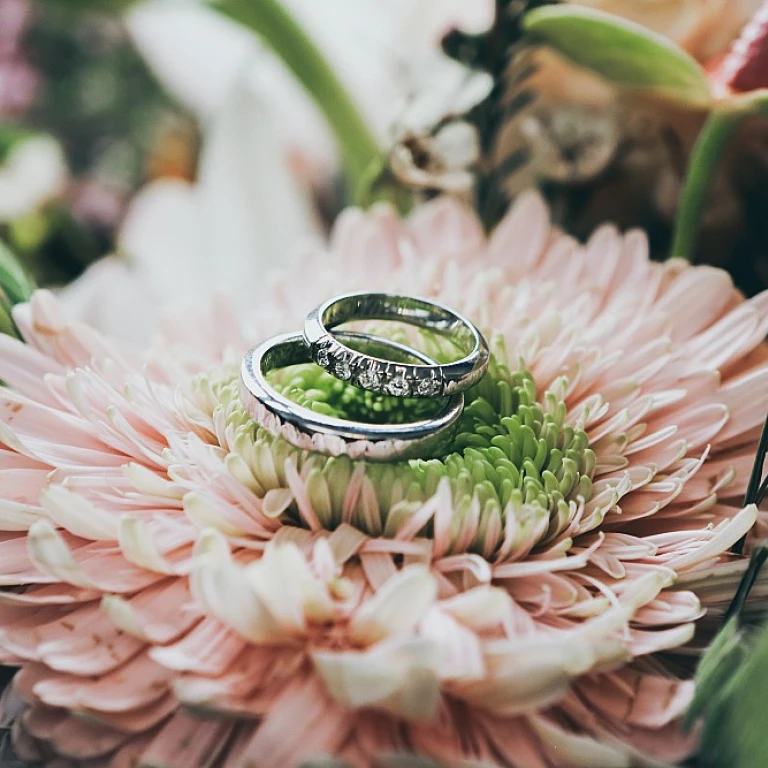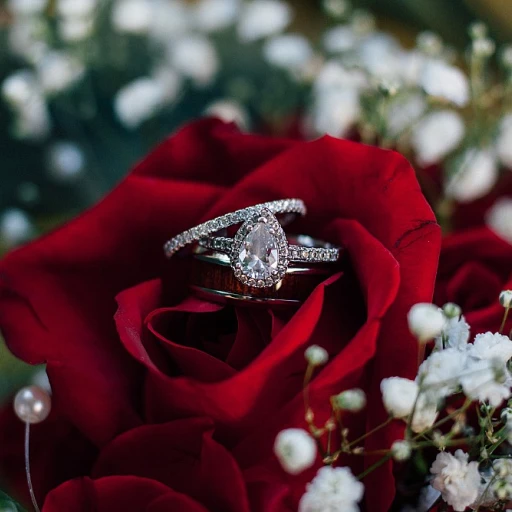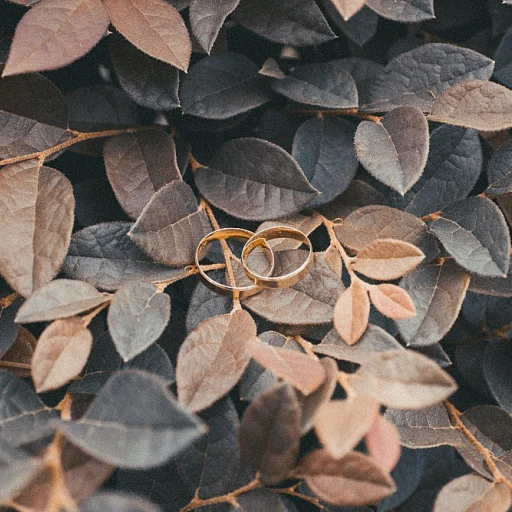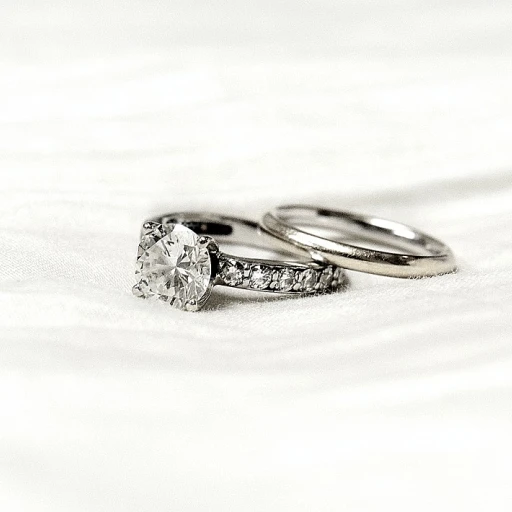Understanding Different Ring Settings
Exploring the Variety of Ring Settings
When it comes to choosing the perfect setting for your loose gemstones, understanding the variety of ring settings available is crucial. Each setting offers unique benefits and aesthetic qualities, which can significantly impact the overall look and durability of your engagement ring or wedding band.
Prong Settings: Classic and Versatile
Prong settings are perhaps the most popular choice for engagement rings. This setting involves using small metal claws to hold the center stone in place, allowing maximum light exposure and enhancing the stone's brilliance. Whether you choose a solitaire engagement ring or a three stone design, prong settings are versatile and timeless.
Bezel Settings: Secure and Modern
For those seeking a more secure option, a bezel setting might be ideal. This type of setting encircles the gemstone with a thin metal rim, offering excellent protection against knocks and bumps. Bezel settings are perfect for active individuals and provide a sleek, modern look.
Tension Settings: Unique and Eye-Catching
Tension settings create the illusion that the gemstone is floating between the band. This innovative design uses the metal's tension to hold the stone securely, offering a contemporary and eye-catching appearance. However, ensure your chosen stone, like a diamond or moissanite, is durable enough for this setting.
Additional Setting Options
- Split Shank: A band that splits into two or more strands before reaching the center stone, adding elegance and dimension.
- Halo Setting: A circle of smaller stones surrounds the center stone, enhancing its size and sparkle.
- Channel Setting: Stones are set closely together in a groove, offering a smooth and continuous appearance.
Each setting style offers its own charm and functionality. To explore more about how these settings can enhance your wedding rings, consider reading this detailed guide.
Popular Gemstone Choices for Wedding Rings
Gemstone Favorites for a Standout Wedding Ring
Choosing the perfect stone for your wedding ring involves balancing beauty, durability, and personal style. The stone you select will significantly impact the overall look and feel of your ring. Let’s explore some popular gemstone choices ideal for engagement and wedding rings.- Diamond: Known for its unparalleled brilliance and timeless appeal, a diamond is the quintessential choice for many. Its incredible hardness ensures a long-lasting ring, available in various cuts like the popular round brilliant, making it compatible with different settings.
- Moissanite: This gemstone is an excellent alternative to the classic diamond, offering exceptional sparkle at a more affordable price point. It pairs well with a variety of settings, enhancing its allure in settings like a three stone or solitaire engagement ring.
- Sapphires: Beyond the traditional blue, sapphires come in a spectrum of colors. Their durability makes them a superb centerpiece, especially in a bezel setting that offers additional protection.
- Emeralds: Though softer than some other stones, their rich green color is captivating. Choosing the right setting, such as a bezel set or tension setting, can help protect these vibrant stones.
- Rubies: Their deep red hue symbolizes love and passion, making them a fitting choice for wedding bands. A prong set enhances their natural beauty by allowing more light to enter the stone.
Customizing Your Ring Setting
Personalize Your Ring with Unique Settings
Customizing your ring setting allows you to create a truly unique piece that reflects your personal style and preferences. Whether you’re drawn to a classic solitaire engagement ring or a more intricate three-stone design, the options are nearly limitless. Here are some key considerations when customizing your ring:
- Choose the Right Setting Style: Consider whether you prefer a prong setting, bezel setting, or tension setting. Each offers a different look and level of security for your stone. A prong set ring can enhance the brilliance of a diamond or moissanite, while a bezel set provides a sleek, modern appearance.
- Select Your Metal: The choice of metal can significantly impact the overall aesthetic of your ring. Sterling silver, for instance, offers an elegant yet affordable option, while platinum or gold may provide a more luxurious feel. Consider the regular price and sale price of each metal to stay within your budget.
- Consider the Band Style: From a simple silver ring to a more elaborate split shank design, the band style can enhance the beauty of your center stone. A setting round or round cabochon cut can complement various band styles.
- Incorporate Personal Touches: Adding personal elements, such as engraving or selecting a unique cut for your center stone, can make your ring even more special. Consider a bezel setting or prong setting for a diamond or moissanite to highlight its unique features.
By focusing on these aspects, you can ensure that your customized ring not only meets your aesthetic desires but also fits comfortably within your budget. Remember, the unit price and price sale of different settings and stones can vary, so it’s essential to explore all options to find the perfect balance of style and affordability.
Caring for Your Gemstone Ring
Maintaining the Brilliance of Your Gemstone Ring
Ensuring the longevity and sparkle of your gemstone ring involves a few simple yet essential care practices. Whether your ring features a diamond, moissanite, or other precious stones, proper maintenance can preserve its beauty and value over time.
Regular Cleaning
Regular cleaning is crucial to keep your ring looking its best. Use a mild soap and warm water to gently clean the stone and the setting. Avoid harsh chemicals that can damage the metal or the stone. For a more thorough cleaning, consider professional services, especially for intricate settings like a prong setting or bezel setting.
Protecting Your Ring
- Avoid Physical Damage: Remove your ring during activities that could cause scratches or knocks, such as gardening or exercising.
- Store Safely: When not wearing your ring, store it in a soft pouch or a lined jewelry box to prevent scratches and tarnishing, especially for sterling silver rings.
Regular Inspections
Inspect your ring regularly to ensure the stones are secure in their settings. Settings like prong set or tension setting may require adjustments over time. Check for any signs of wear on the band or mounting, and consult a professional jeweler if you notice any issues.
Consider Professional Services
Professional services can offer more than just cleaning. Jewelers can provide services such as polishing, re-plating for white gold, or tightening loose stones. Regular professional check-ups can help maintain your ring's appearance and structural integrity.
Insurance for Peace of Mind
Consider insuring your ring to protect against loss, theft, or damage. This is particularly important for rings with high-value stones or intricate custom settings. Insurance can provide peace of mind and financial protection.
By following these care tips, you can ensure that your gemstone ring remains as stunning as the day you first wore it. Whether your choice is a classic solitaire engagement ring or a unique three stone design, proper care will keep it shining bright.
Budgeting for Your Perfect Ring
Making Smart Investment Choices
Budgeting is crucial when selecting a wedding ring, ensuring you find a perfect ring that works well within your financial means. A good starting point is to decide on a realistic budget by evaluating your overall wedding expenses and prioritizing what matters most to you in a ring. Consider the type of stone or diamond that resonates with you and your partner, as well as the metal used for the band, such as sterling silver or gold.
Understanding the Factors Affecting Cost
- Metal Choice: Sterling silver may be more affordable compared to platinum or gold bands. Assess the pros and cons of each to determine which fits both your aesthetic and budget.
- Stone Characteristics: The unit price of your center stone, whether it's a diamond, moissanite, or another gemstone, will largely depend on factors like cut, clarity, carat, and color.
- Ring Setting: The choice between prong, bezel set, or tension setting can impact the price. More intricate settings like a split shank or three stone design might increase costs.
- Customization Options: Personalizing your rings involves additional costs but adds sentimental value. Consider which elements are worth the added expense for you and your partner.
Finding Quality at a Good Price
When shopping for the perfect ring, compare regular prices and hunt for sales. Retailers often offer rings at a sale price that can significantly reduce the cost of high-quality pieces. Keep an eye out for any promotions that might feature the diamond, stone, cut, or band of your dreams. Thorough research and thoughtful decision-making are key to ensuring that your ring is both within budget and symbolizes your unique commitment.






